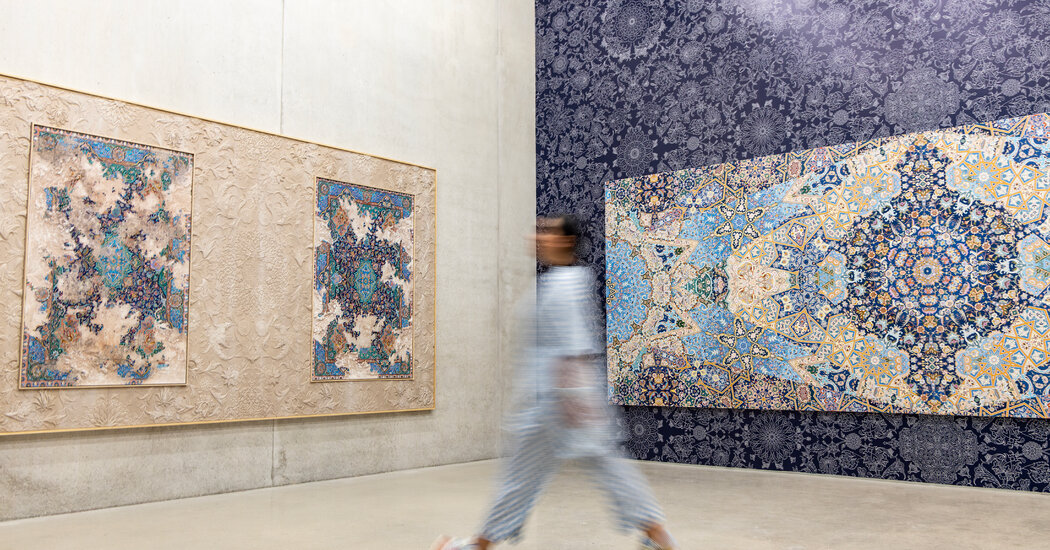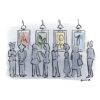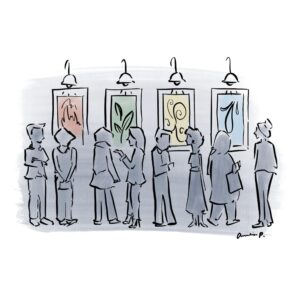
A European artist, curator, and collector consider the upstart: Is it an art world hub? Overhyped? Or a place to grow the arts outside museum walls?
Since the birth of Art Basel Miami Beach in 2002, Miami has prospered as a contemporary-art center, with museums and foundations opening or reopening in spacious new premises (the Pérez Art Museum Miami; the Institute of Contemporary Art, Miami; the Rubell Museum Miami), and galleries proliferating in the art and design districts. How are the goings-on in this newer art scene viewed by major players in the European art world? We spoke to three. The conversations have been edited and condensed.
ALAIN SERVAIS Brussels art collector and investment banker who has been acquiring art for 25 years and has attended Art Basel Miami Beach regularly since its inception
When I first started going to Miami, it was an interesting experience, because it was a unique meeting point between Latin America and Europe, and you were seeing good collectors, good creators. The problem now is that there are so many events, I don’t meet people anymore. The last time I was in Miami, which was before the pandemic, I was spending my days almost on my own. If you cannot network anymore, what’s the point?
We are observing a silo-ization of the different fairs. Traveling to Art Basel in Basel, Hong Kong and Miami Beach, I have realized that, in fact, it’s different art in all of them, because they are catering to the local audience. Originally, they were global fairs, but now they have become regional fairs.
Meanwhile, the world outside of Miami has evolved. Madrid has taken a big spot. As a European, you don’t need to cross the ocean anymore to see galleries or collectors or curators from Latin America, because they’re coming to Arco Madrid — which has risen in terms of its positioning because of the diversity and the quality of the attendance.
In Europe right now, we not only have three major art fairs in October — Frieze London, Frieze Masters and Paris + by Art Basel — but we have the best museums in the world outside of New York. Then you have the massive auctions in mid-November in New York.
You cannot multiply this energy and this cash for eternity. Funds are not unlimited. That means that the art that will sell in Miami will not really be the big collectibles — because they will have been sold either at fairs in Paris or London, or at auction.
GREG HILTY Curatorial director of Lisson Gallery (headquartered in London, with branches in New York, Los Angeles, Shanghai and Beijing), which has participated in Art Basel Miami Beach every year since 2002
Art Basel Miami Beach is the most important fair in the United States, and one of the most important fairs in the world. Art Basel is a classic blue-chip, modern and contemporary art world fair. Miami has a broader, more open approach. It comes at a great time, at the end of the autumn season, so there’s a cumulative sense of it being the conclusion of the year for the art world. And it’s a great place for many people to be — it’s warm and friendly and a fulcrum, economically and culturally, between North and South America.
For us, it’s a very important platform to present work from Latin American artists into the North American market, and vice versa. Miami is both a place for high-value, serious business, and a place where people look for surprises, news and innovation.
The museum culture has grown since the inception of the art fair. I went to the Pérez Art Museum Miami when it was a building site. There was a kind of openness and porousness to it that seemed suitable to Miami. The director Franklin Sirmans has brought in a really international program through an American, including South American, lens, which doesn’t really happen anywhere else. The ICA Miami is doing smart and innovative programming. The Rubell and Margulies collections are ambitiously curated private programs.
Miami has a lighter touch. You don’t have to see 10 museum shows while you’re there, so you’re very much focused on the fair and the business at hand. In the same way that Art Basel Hong Kong has become a hub for the Asian world, Art Basel Miami is a hub for the American world.
ES DEVLIN London designer and artist whose installation “Forest of Us” is on view at the immersive art gallery Superblue in Miami, and who has been coming to Miami since 2017
What differentiates Art Basel Miami Beach from Frieze London or any of those other fairs is the fact that it reaches out into the environment, instead of staying within a series of tents with air conditioning and objects to be bought and sold. It’s a place of natural beauty.
Miami offers proximity to a huge global center — New York — which makes it not very hard to get there. Yet it also offers proximity to some of the natural wonders of the planet in terms of species, trees, forests and underwater biodiversity.
I’ve only been going since 2017. At the time, there was not this engagement with the ocean and with reforestation. There has been a shift.
Because of the growing climate crisis, there’s more and more engagement by artists with climate and civilizational crises. They are looking to see how they can be part of it. Both artists and curators are driving this interest. Many of them are saying: “Once we have an audience in this mode of aperture and openness and readiness to read and receive and learn, why not take them out into the forest, why not take them into the ocean? Why not present these broader convergences and constellations between art and activism?”
Besides visual art, there’s the music, the atmosphere, and a lot of other stuff going on there, as well as the ability to entwine culture and nature. Yes, you may only have a few museums. But you can go underwater and swim in the sea. You can go into the Everglades and get deep inside the forest, and get in one of those beautiful boats along the waterways and see a load of alligators. You can’t do that in Paris.
Instead of siloing our experience, where we consider culture to only be museums and nature to only be in the forest, why don’t we value the fact that this is a convergence of both, and encourage both to flourish, and support the arts in Miami so that they continue to grow?
This post was originally published on this site be sure to check out more of their content


